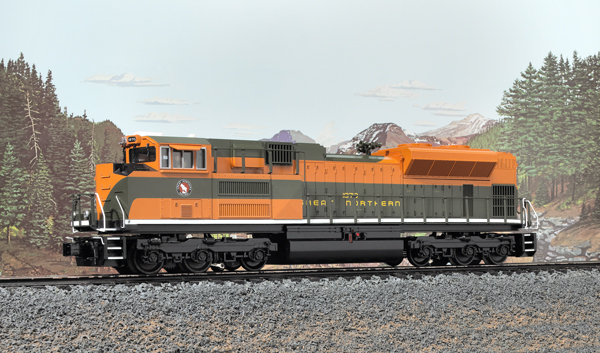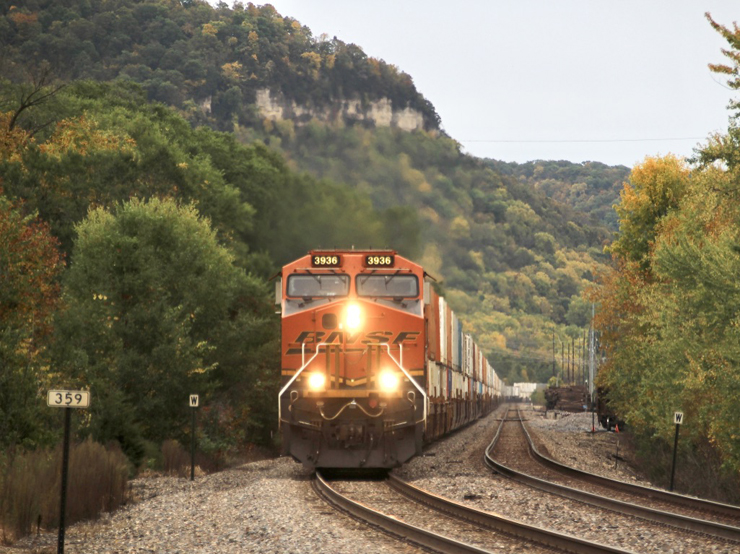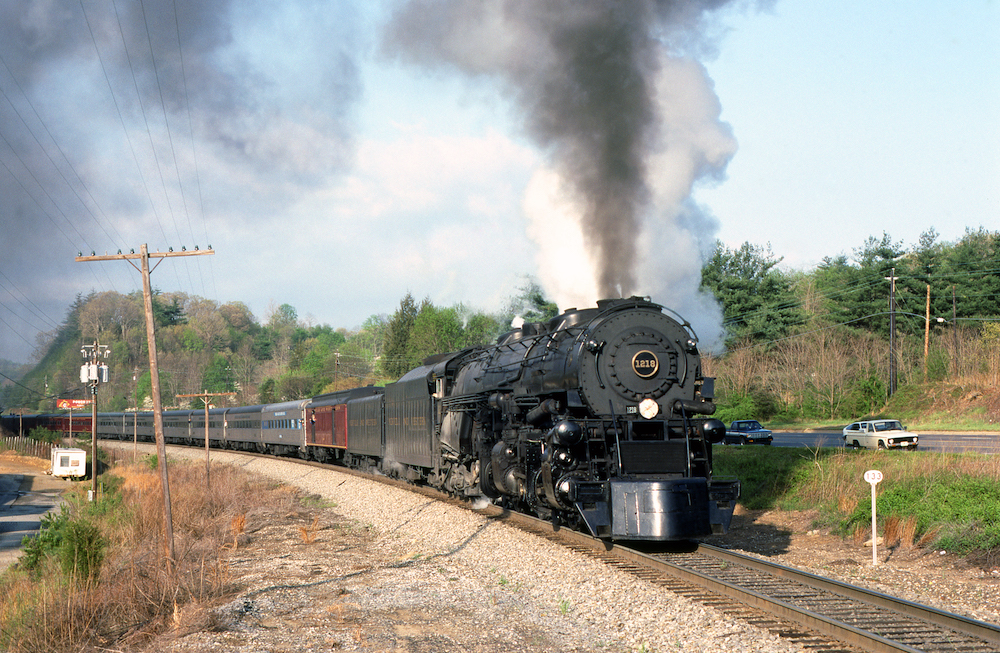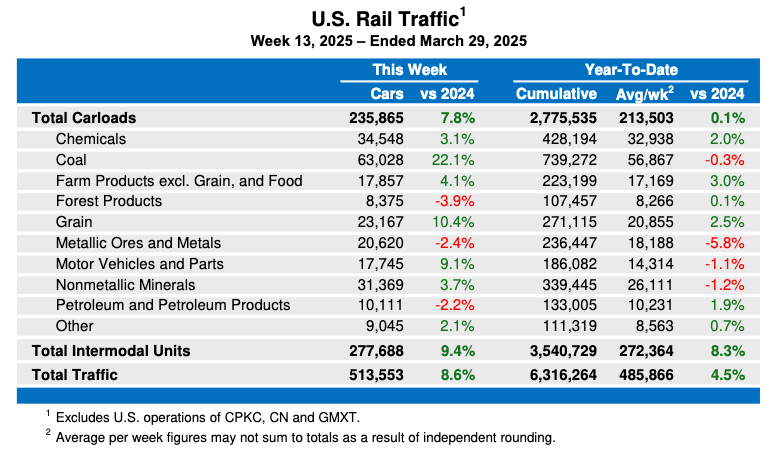A variety of sub-models has been cataloged, and the SD70ACe version was first fielded in 2004 and featured a prime mover upgraded to meet Environmental Protection Agency Tier-2 standards for emissions. The ACe version of the SD70 was rated at 4,300 horsepower, and more than 1,200 have been sold, with the model still being offered for sale by EMD. Go to www.emddiesels.com for more information about the SD70ACe.
This O gauge SD70ACe model is one that I’d been looking forward to seeing since its first appearance in an MTH catalog. This model is a RailKing Imperial line locomotive.
What is an Imperial line product? Broadly speaking, Imperial products have more detail than regular RailKing items and are larger – not quite scale but much larger than early RailKing products like the Dash 8 or SD60, which were about the size as an NW2 switcher.
An objective of the Imperial line is to fit larger locomotion onto tighter radius track. By that criterion, the Imperial SD70ACe fills the bill.
Opening the box
Just as size was important with the previously reviewed Lionel 4-12-2, so too are dimensions important with the MTH RailKing SD70ACe. The frame is 15¾ inches long, which works out to approximately 63 feet in O scale. The real SD70ACe is a bit more than 74 feet long, so while there is compression in the design, it isn’t too outrageous.
The design has a satisfactory mix of cast-in and add-on detail. For example, you’ll find add-on multiple-unit cables and air-brake lines on the pilot as well as an add-on uncoupler arm. On the snout, there is a mix of cast-in grab irons on the brakeman’s side and five add-on irons on the top of the nose and the four downward angling sections. Two sand-fill caps are located on the nose, and a third is on the top of the opposite end of the model.
On the front deck you’ll find add-on ditch lights. On all the decking, you’ll find a general safety tread pattern that, frankly, would probably have been easy to omit but is the more important because it was included on a value-priced locomotive.
The cab has two crewmen, wiper arms on the windows, and a headlight/number board above the windshield.
On the body as a whole, the clarity of the cast-in details, such as hinges, latches, doors, and louvers, is right up there with a Premier line model. You’ll find see-through vents behind the cab and at the rear of the shell. The screens on the overhanging radiator wings are see-through, but there isn’t anything to actually see through them!
Additionally, the radiator wings lift off to provide access to the DCS/DCC, smoke, and volume controls.
The rear has cast-in grab irons and handrails, and you’ll find an add-on brake wheel below the wings.
All the handrails on the sides and ends are metal devices.
Roofline detailing includes an air conditioner and a round GPS/radio antenna, simulated lift rings, and an elaborate five-chime air horn.
The exhaust fans atop the wings are cast in and painted black, but you can see subtle impressions that represent fan blades. Again, this is a detail that could have been left out, but wasn’t.
The paint scheme was an excellent rendition of a fantasy Great Northern design (a fantasy in that the Great Northern ceased to exist in 1970 – more than 20 years before the first SD70 was built).
The model is also available in Alaska RR, Pennsylvania RR, and Western Maryland road names.
Paint application and detail lettering was first-rate. Paint lines were sharp and I didn’t note any overspray.
On the test track
The model has two can-style motors and coil couplers on each end. The smoke unit can create a nice haze of the white stuff when running.
The O gauge locomotive was fun to run. Motor operation was smooth, quiet, and responsive in all speed ranges. Whether running light or with cars in tow, there was no difference in performance.
This MTH model packs the ProtoSound 3.0 system. It has a built-in capacitor that eliminates the need for a battery or re-charger. As mentioned in previous reviews of PS 3.0 locomotives, there is a slight hesitation on initial startup due to capacitor charging.
The startup sounds are great, and the prime mover sounds are also solid. I particularly enjoyed the sound of the engine winding down as I lowered from a moderate speed to the slowest speeds.
Our conventional low-speed average was 3.06 scale miles per hour, and the command-mode low-speed average was 2.85 scale miles per hour. The high-speed average was 71.1 scale miles per hour.
Drawbar pull for the locomotive was 2 pounds, 14 ounces. I actually did a double take, because I was expecting a somewhat lower drawbar pull – maybe around 1 pound and some change. So I was pleased.
This is a quality piece that deserves consideration to join your fleet, especially if your space is tight.
Features: O-31 operation, two can-style motors, ProtoSound 3.0 command and sound system, coil couplers. For more information go to www.mthtrains.com















I checked the Walthers site and had a difficult time finding them. This is what they are: Walthers Instant Horizon Background Scenes. When I ran a search of Walthers products, they showed up on page 57!
Nicolas,
This is a backdrop we bought through Walthers prior to my arrival at CTT in 1996. You might check walthers.com to see what they have in stock. I believe these were Walthers branded products.
dear BOB.
real nice.appetizing.
would you kindly inform of the source of the background backdrop….been looking for such a scene since years.
thank you.
nicolas bikhazi
beirut-lebanon
MTH has jumped light years ahead of the competition. Much better bang for the buck….
It sure is a BEAUT!!!! Could very well be one of MY next engines!